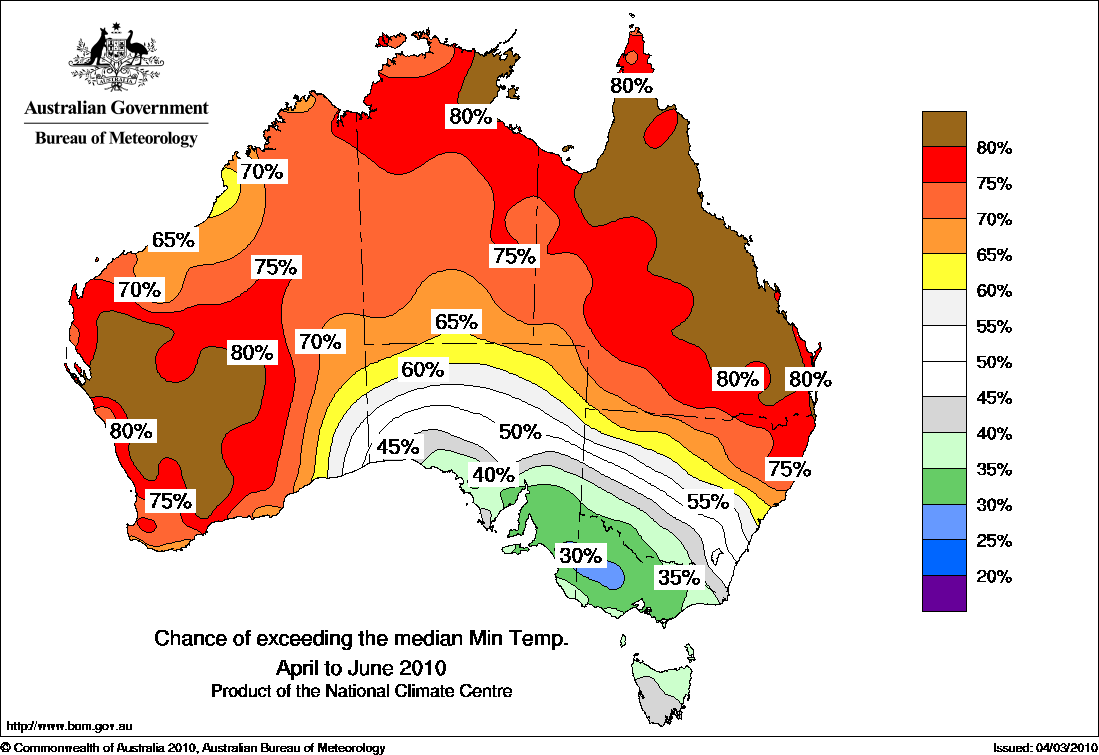
-
 La calda estate australiana
La calda estate australiana
Mentre noi ci avviciniamo alla nostra, di estate, uno sguardo agli antipodi, visto che ci siamo affacciati a guardare Ului.
Qualche giorno fa il Bureau of Meteorology ha emesso un verdetto secco: "hot summer" per quella appena conclusa.
Tante sono le analisi in corso, ma forse quella più interessante riguarda la costa "mediterranea" dell'Australia, quella forse più simile ai nostri climi, corrispondente alle coste del Victoria.
Melbourne warms to a record long, hot summer
Melbourne has recorded its 100th day in a row when the maximum temperature has exceeded 20 degrees Celsius. Forecasts suggest the record run may extend into next week, at least. The last time Melbourne recorded a maximum temperature of less than 20 degrees was 8 December last year.
Melbourne’s string of warm days far exceeds the previous record of 78 days, set between 29 December 2000 and 16 March 2001. Records in Melbourne date back to 1855.
Melbourne’s record run reflects the very warm conditions that have been experienced across Victoria since the start of last winter. Victoria’s mean temperature for the nine months from June 2009 to February 2010 is 15.3 degrees, the highest on record, and is 1.4 degrees above the 1961-90 average. The previous record of 15.1 degrees was set in 1980.
In sostanza estate record assoluto: 15,3° di media contro il record precedente pari a 15,1° del 1980.
Siamo al 107° giorno di temperature over 20°C.
In un contesto così caldo non sono stati rari eventi temporaleschi molto intensi, l'ultimo il 6 marzo scorso. L'ufficio ne ha redatto un'analisi veramente dettagliata.
Thunderstorm in Victoria 06 Mar 2010
La città è stata letteralmente tagliata da un MSC a supercella con numerosi eventi rotativi documentati, soprattutto nelle vaste periferie della città (la grande Melbourne ha 3,8 milioni di residenti).

In generale il caldo ha riguardato tutta la nazione (ricordate gli incendi di Sydney?). Guardate che numeri la prima heatwave di Adelaide:
First Heatwave for Adelaide in 2010
Large parts of South Australia experienced an extended period of very hot conditions during the second of week of January with Adelaide recording its first heatwave of the new decade.
Adelaide recorded an unbroken run of 5 consecutive days in excess of 35°C with 4 of these days exceeding 40°C.
Adelaide 2010 7 Jan 8 Jan 9 Jan 10 Jan 11 Jan Maximum(°C) 35.1 41.0 41.3 42.0 42.8 Minimum(°C) 16.6 26.7 21.6 25.6 28.9 The definition of a heatwave for Adelaide is five consecutive days at or above 35°C, or three consecutive days at or over 40°C. This definition is only applicable to Adelaide since climatic norms differ across the state.
The extended run of heat across South Australia was caused by the persistence of low pressure troughs across central and western parts of Australia combined with higher pressures to the east of the state. This resulted in hot east to northeast winds across most areas of South Australia between 7 to 11 January. During 11 and 12 January the westernmost trough pushed across the state bringing cooler conditions and widespread rainfall, mostly between 5 to 20mm.
9 heatwaves were recorded in Adelaide between 2000 through to 2009 and this is the highest decadal total since 1880. This last heatwave is the first of a new decade. The previous highest was 8 heatwaves recorded in each of the decades between 1900 to 1909 and 1930 to 1939. An analysis of observations from Adelaide back to 1880 shows in the 11 decades prior to 2000 there were only a total of 49 other heatwaves recorded.
http://www.bom.gov.au/inside/eiab/St...imate-2010.pdf
Alcune mappe


 Permessi di Scrittura
Permessi di Scrittura
- Tu non puoi inviare nuove discussioni
- Tu non puoi inviare risposte
- Tu non puoi inviare allegati
- Tu non puoi modificare i tuoi messaggi
-
Regole del Forum


Segnalibri